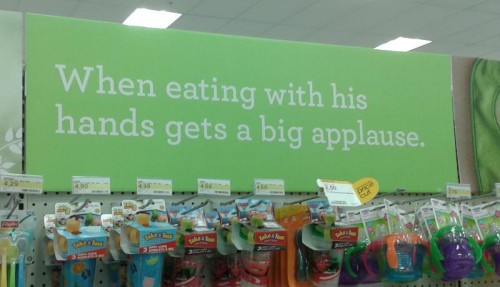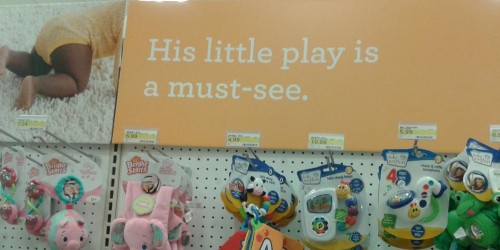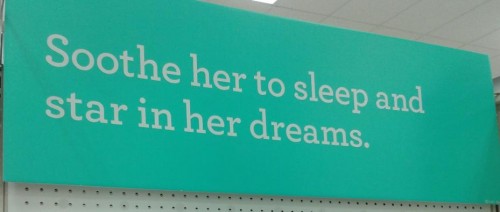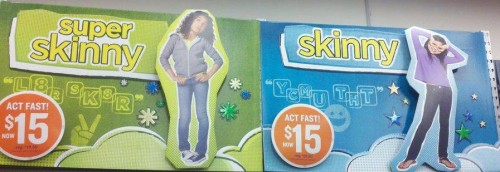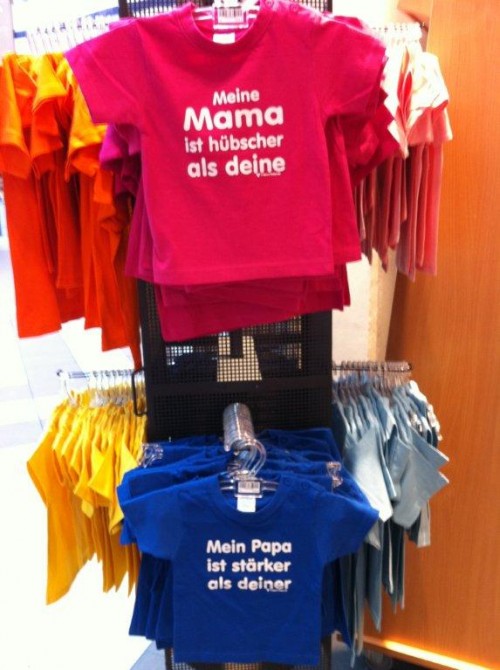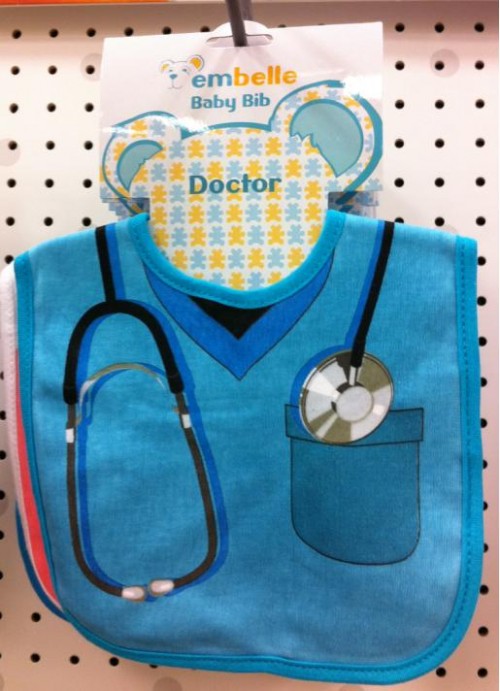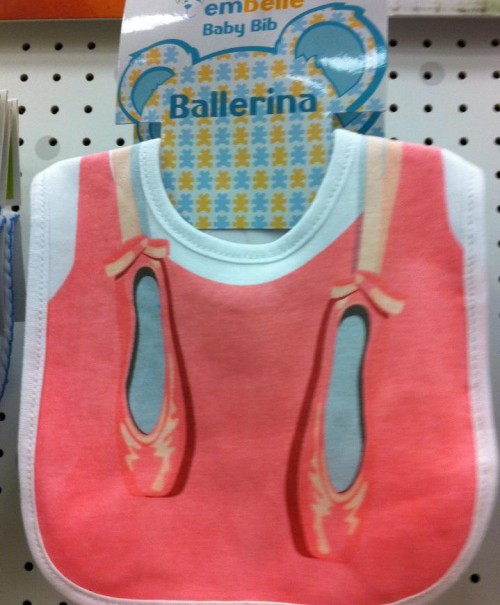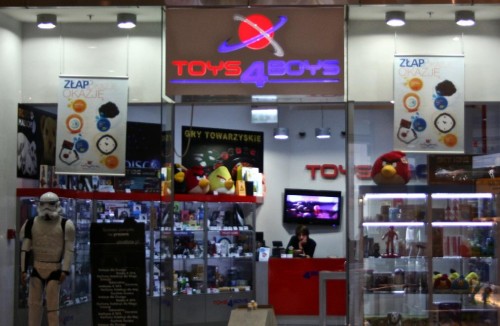I’ve posted in the past about differences I’ve noticed in the language used in signs in the girls’ and boys’ clothing sections at Target, which seemed to reinforce the idea that boys are rough and rowdy while girls are sweet. Eric B. sent in another example that he recently saw in Target’s infants’ department. The store he went to had five aisles; each aisle had a set of large signs along the top. Three of the five were focused on boys, and they all emphasize activities:
So boys actively do things (they play, they learn to feed themselves, they discover) that merit adult attention and admiration. What about girls?
Oh, they sleep:
For other examples of how we reinforce the boys are active/girls are passive binary, see our posts on the binary in Lego City, in kids’ meal toys, and in magazines.

